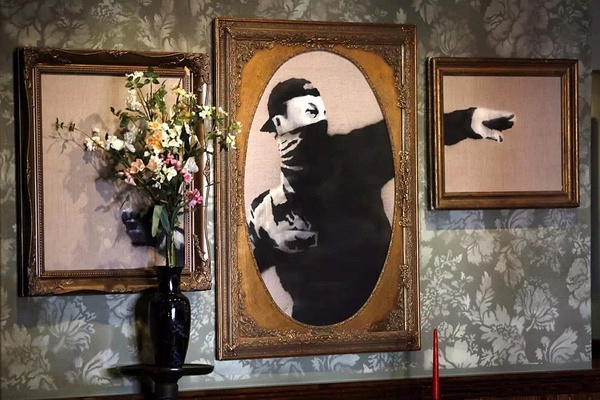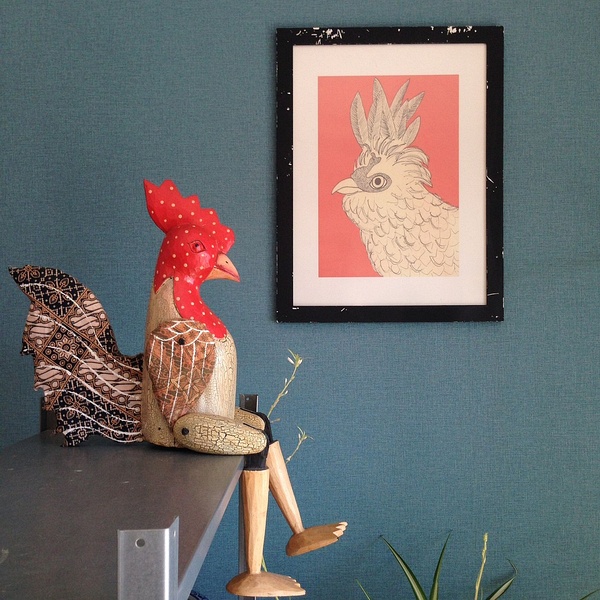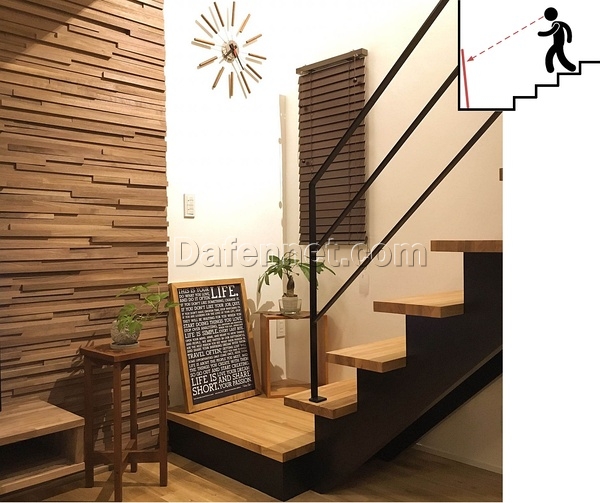Dafen oil painting Village
How to Hang Art at Home: Real-Life Wall Decor Ideas That Actually Work
1. Where to Hang It?
“This wall looks a bit empty, how about hanging a painting here?” If that’s how you’re approaching the problem, do yourself a favor and give yourself thirty smacks before reading on.
The point of hanging art is not to fill blank walls, but to elevate your quality of life. Just like dating: if you’re only doing it to kill time, maybe it’s better to stay single.
Most people hang art behind the sofa or bed. It looks great in photos, sure. But in real life? You usually see it from afar and turn your back on it when close up. No time to savor it at all.
Even in luxury hotels like the Grand Hyatt Chengdu, art is never casually thrown over beds or behind sofas.
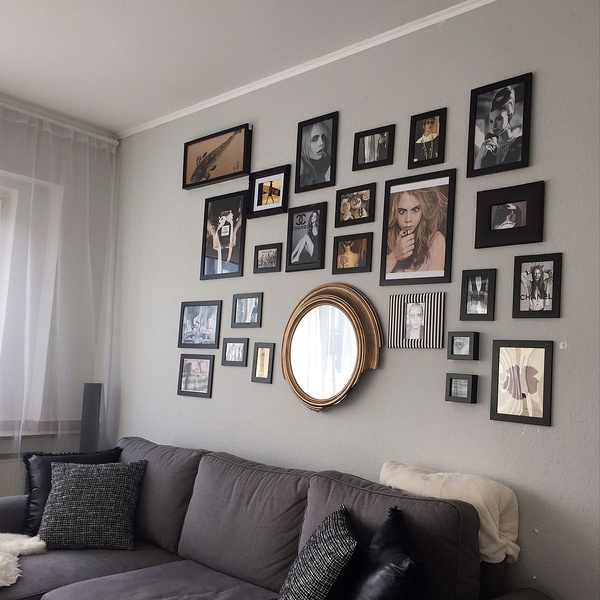
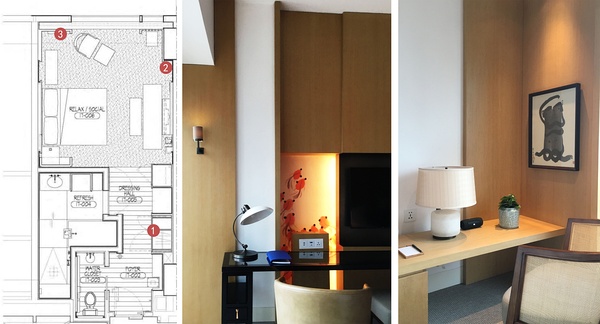
If you want to break out of the cookie-cutter mold, plan your artwork placement early, during your layout stage. Start with your daily movement path at home—getting up, commuting, cooking, bathing, etc.
The areas with the most foot traffic deserve priority. For example: the entryway, the open kitchen. The dining room, too, sees a lot of action—perfect for a piece of art.
2. How to Hang It?
In the entryway, placing an artwork directly in your line of sight feels dramatic—like opening the door and getting hit with a statement piece. But if the guest has “unique” taste, it might backfire.
Jack Ma once said: “Taste is when a painting moves from the wall to the floor.” Crude but wise. Lean it casually against the wall. Let your guests glimpse it while taking off their shoes—now that’s a chic welcome.

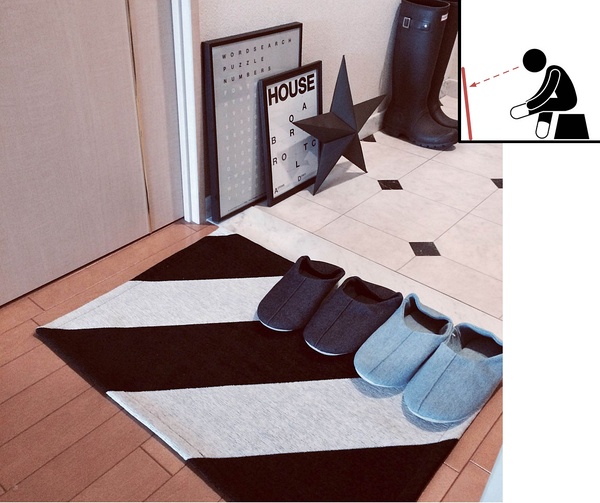
When walking down stairs, the natural line of vision is downward. So why not place your art at the base? It gets noticed more.
In hallways, hang your art a bit higher, with the center around eye level. If there are multiple doors, align the top of the frame with the doorframes for a satisfying rhythm.
Where your eyes go, your space flows. Place art near the floor in the living room, throw in a rug, and suddenly the vibe says: “Let’s sit, let’s sprawl, let’s talk.”
Viewing distance matters too. If you’re often standing at your wine rack, sideboard, or kitchen island, place a delicate piece there that can calm your mood while you prep or sip.
It could be a meaningful quote or even your kid’s doodle. Anything that warms the soul earns its spot.
Many people also decorate their desks. Looks great in photos. But honestly? When I work, I need to concentrate. Something too vivid, too close, distracts me.
If you’re like me, hang the artwork beside your desk, not in your direct line of sight.
Same goes for the bedroom. It’s a place of rest. Keep the wall above your bed calm. You’re not seeing it lying down anyway. A single frame beside your nightstand is more than enough.
There are no hard rules. But arranging art by where your eyes naturally go? That’s how you get maximum enjoyment.
3. What to Hang?
So you know where and how to hang. Now comes the big question: what should you hang?
Don’t rush to Taobao or a mall just yet. Instead, split your personality: become a picky guest walking around your home with judgmental eyes. Then snap back into host mode and ask yourself: What artwork can defend against all those imaginary critiques?
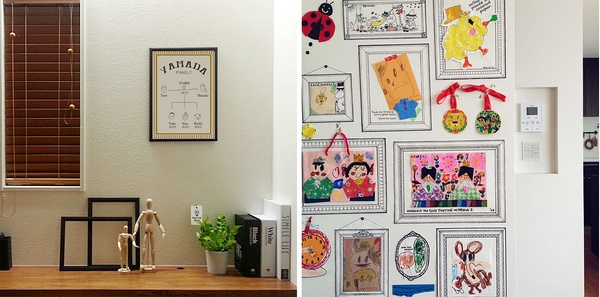
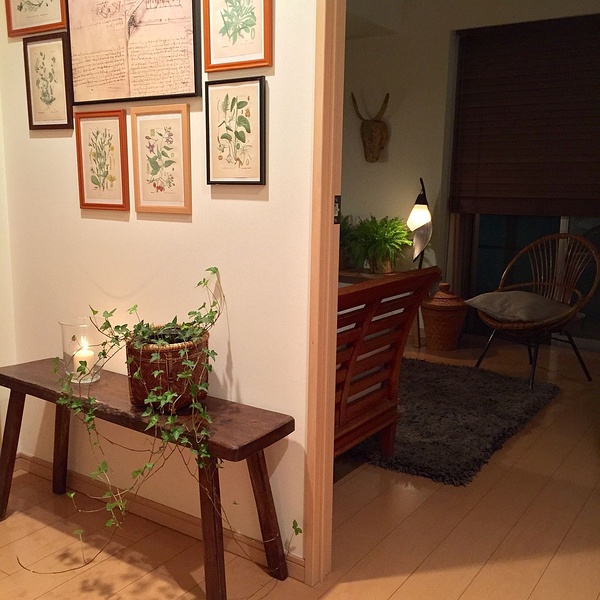
Art in shared areas like the entryway or living/dining room serves a different purpose than in bedrooms or studies. It has to feel a bit “strategic.” Pieces that speak to family, hobbies, or profession are your safest bet—warm, personal, never cheesy.
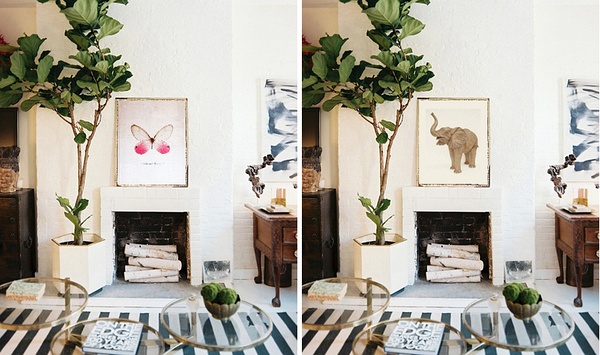
For a family-centric home, start with a hand-drawn family tree or your kid’s masterpiece. Nothing says “welcome” like a personal touch.
Hang a couple portrait to say: this is a child-free zone and we like it that way. No need to explain.
If you love plants, don’t stop at actual greenery. Complement it with a botanical illustration.
Or go a step further—remember the Song Dynasty painting contest? The theme was “Fragrant Flowers Underfoot”; the winning painting had no flowers, just butterflies fluttering around a horse’s hooves. That, my friends, is clever.
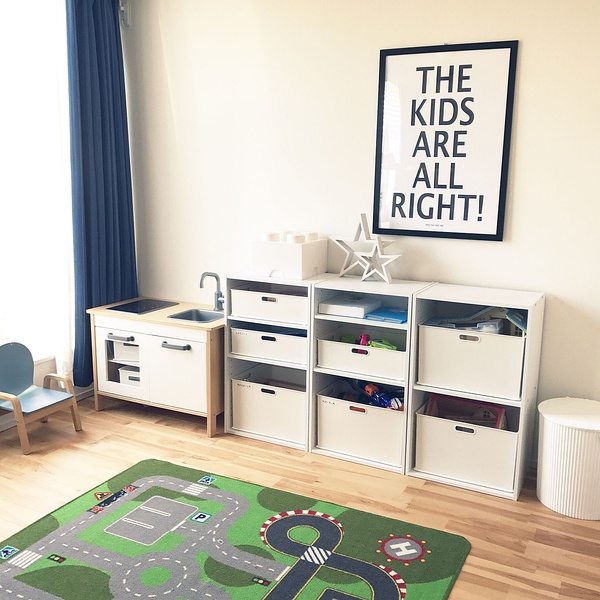
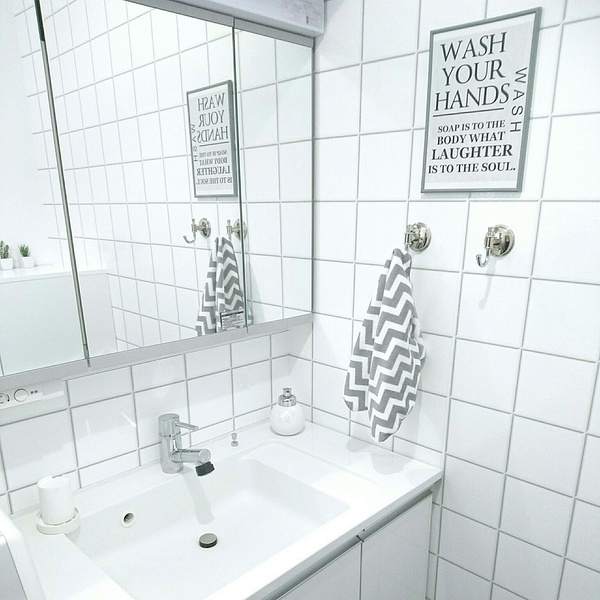
One plant, paired with butterflies, becomes spring. Pair it with elephants? Welcome to a tropical savanna.
A clever placement often beats a pretty frame. This is your home, not a museum. Even a few words can add charm. In your kid’s room, hang something like: “The kids are all right!” Let it remind you to laugh through the chaos.
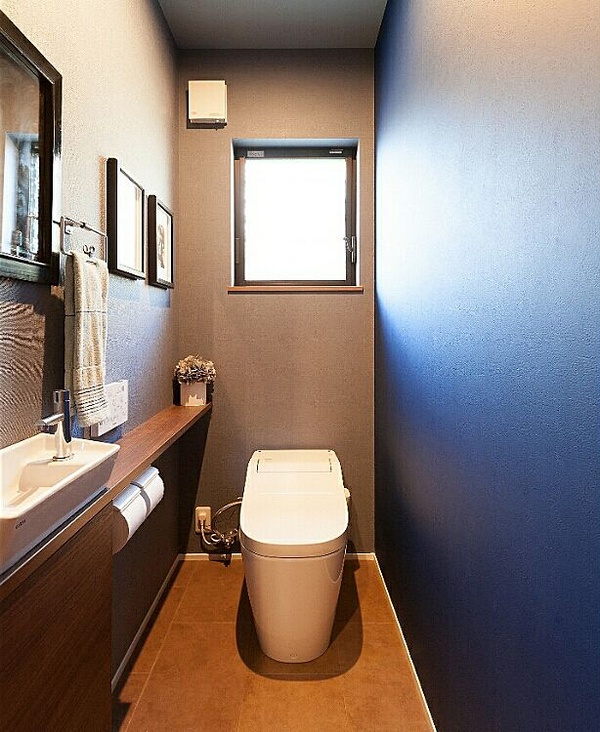
In the bathroom? A gentle reminder to wash your hands never hurts.
The guest toilet, though? That’s prime real estate for punchy pieces. Those straight-laced guests may not notice your living room art, but give them a tiny toilet and a snappy frame, and bam—you’ve made your mark.
Art can also be functional. Use visual tricks to create space. See that painting? It makes it look like there’s another room to the right.
Perspective can be powerful. Banksy’s hotel, The Walled Off Hotel, uses broken frames and optical illusions to rethink art entirely.
Sometimes the frame talks to the room. Two chickens in and out of the canvas. Who’s dreaming of whom? Zhuangzi or the butterfly?
And here’s one of my personal favorites. Looks ancient and sophisticated, right? The inscription reads: “May every mother pig birth many piglets.”
Yeah, I haven’t totally outgrown lowbrow humor.
When it comes to wall art, people obsess over matching styles, coordinating colors, getting proportions just right. From a design perspective, those things matter. But hey, this is your home. Does it really have to be so strict?
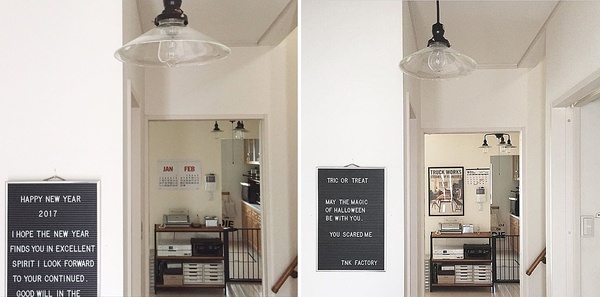
To me, style is like a ruler. It helps beginners create harmony and avoid chaos. But if you measure everything by that one ruler, all your lines may be straight—but they lose their soul.
Our homes aren’t lacking in style. What they need is a bit more life, a bit more joy, a bit more mess.
Real living, that’s the best decor.
